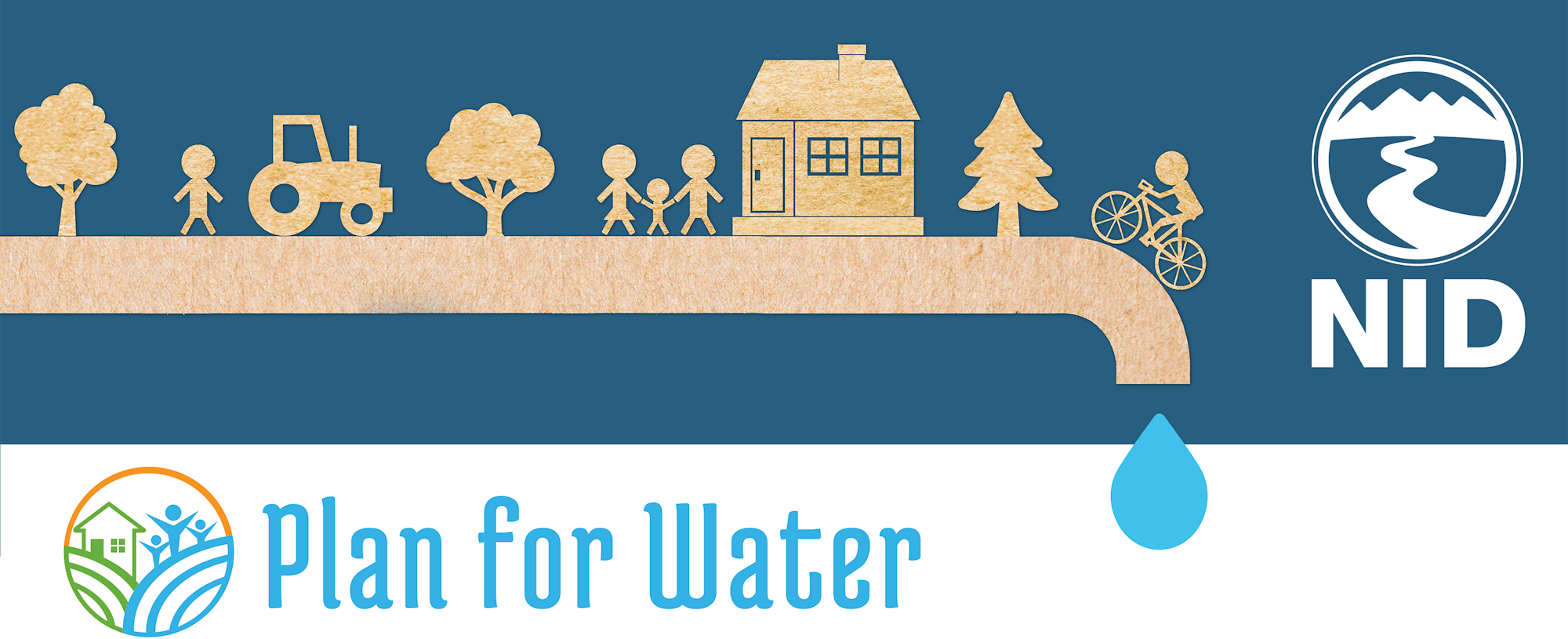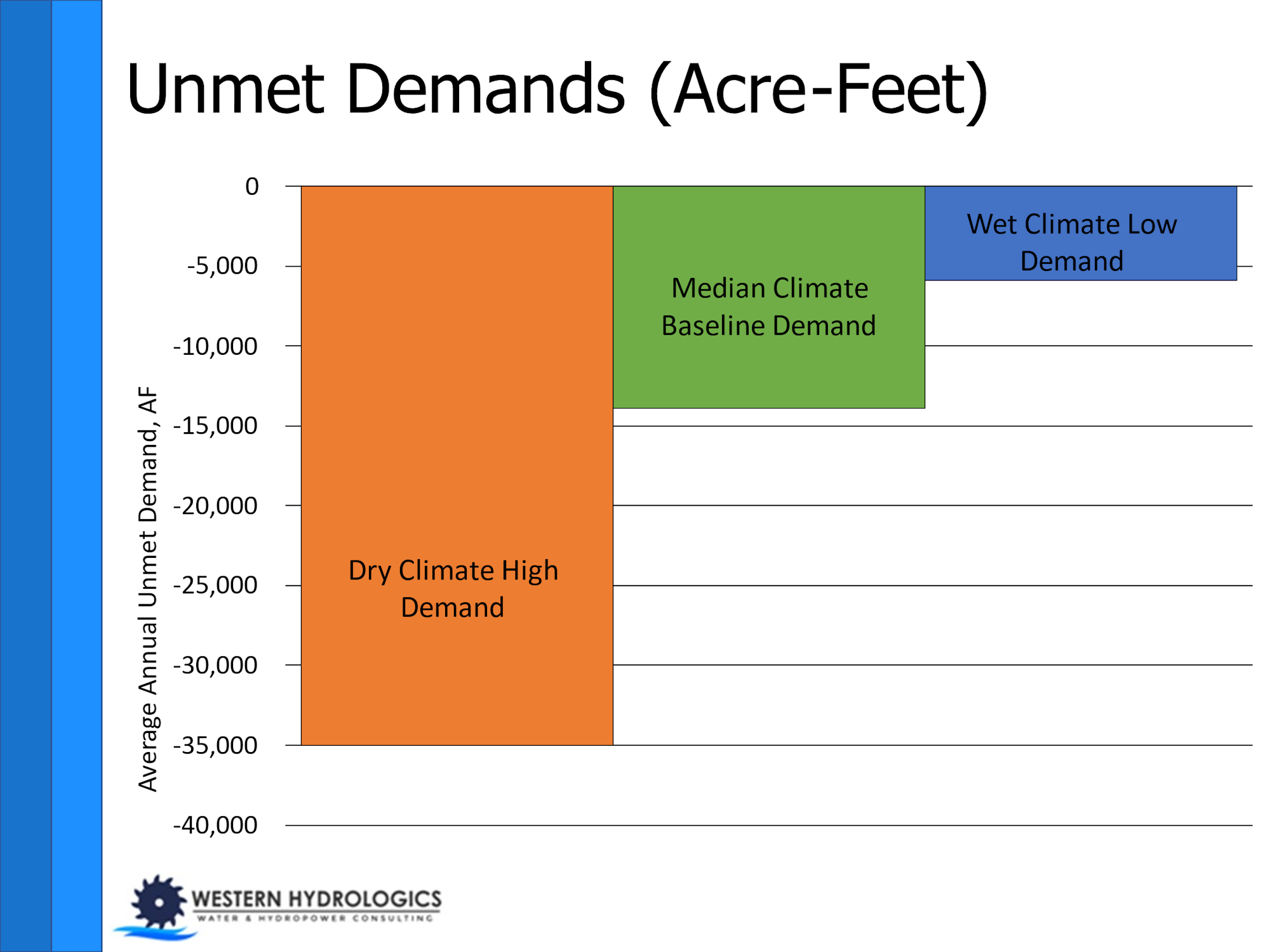Plan for Water Final Technical Memorandum is released
Report details strategic alternatives to meet the community’s future water needs

After more than two years of public discussions about the best ways to meet the community’s demand for water over the coming decades, the Plan for Water Final Technical Memorandum has been released by the Nevada Irrigation District (NID).
The Memorandum details strategic alternatives and how future supply and demand scenarios may be integrated into the District's water management practices and capital improvement projects.
The Plan for Water (PFW) process began in November 2021 and included a review of NID’s available water supply and long-term impacts on varying water demands. The public was invited to participate in a series of workshops covering 11 stages. These included: the NID delivery system, water rights, watershed, risk, strategic planning, hydrology and hydrography, and local water supply and demand.
This Memorandum documents the modeling results and the associated evaluation that was presented in March 2024. The public is invited to read the report and will have the opportunity to make comments before NID directors when the Board discusses the Memorandum at a meeting scheduled for Sept. 25. Please note that there will not be a formal public comment and response period for this document. Comments were accepted and responded to throughout the model development process.
Memorandum details:
The Memorandum focuses on the three numerical models that were developed to collectively represent how NID’s water delivery system works: a hydrology model to represent watershed performance, a demand model to estimate how much water is required to meet customer and regulatory needs, and an operations model to simulate the functions of NID’s system of water storage and conveyance.
Together, the models were used to evaluate a range of alternative operating strategies and their ability to meet the future needs of NID customers.
Models Development
The PFW modeling (Stages 7, 8, and 9) consisted of the development of three numerical models that collectively represent how NID’s water delivery system works.
- Hydrological Model: A physically based hydrological model that represents current and future runoff conditions within NID watersheds. Runoff scenarios were developed using precipitation and temperature projections as inputs. These projections were generated from three representative global climate models (extreme dry, medium, and wet climate conditions).
- Demand Model: A demand model was configured and applied to estimate projected demands for a 50-year planning horizon. The demand model analyzed projected customer demand under three different demand scenarios (high, baseline, and low demand). The model utilized local data to account for the relative effects of estimated future changes in land use, climate, irrigation practices, soil properties, and other facts that impact demand.
- Operations Model Development: A reservoir operations model was developed to simulate the operation of NIDs current storage, conveyance, and delivery system. The operation model used inflows from the hydrology model, operating rules, and regulations to assess how well customer demands were met. Three main scenarios were simulated through the operations model:
- Dry Future Climate with High Demands
- Median Future Climate with Baseline Demands
- Wet Future Climate with Low Demands
Utilizing the models described above; it is projected that the District will experience an annual average unmet demand under any of the three scenarios.

Strategic Alternatives
Seven strategic alternatives were investigated to assess their potential to reduce projected unmet demands. These alternatives included:
- An extended irrigation season, assuming two additional weeks in October
- A Rollins Reservoir storage increase of 10,000 acre-feet (AF), equivalent to an increase of 18 percent of existing storage capacity
- A Rollins Reservoir storage increase of 50,000 AF, equivalent to an increase of 91 percent of existing storage capacity
- The addition of Centennial Reservoir, a new reservoir on the Bear River downstream of Rollins Reservoir with a storage capacity of 96,660 AF. A reduction in reservoir carryover storage targets in NID reservoirs at the end of the irrigation season totaling 50,000 AF, equivalent to 38% of the current carryover storage target
- Additional water purchases from PG&E based on the existing 2018 Coordinated Operating Agreement (COA) between NID and PG&E
- A combination of revised carryover storage targets (50,000 AF) plus additional water purchases from PG&E based on the existing 2018 COA
These seven alternatives were individually simulated by the operations model. Results of each strategic alternative simulation were compared against the baseline climate change scenario and are summarized below:

Across all three climate scenarios, the Rollins Reservoir 50,000 AF storage increase alternative resulted in the largest relative increase in average annual deliveries, with similar reductions in average annual unmet demand.
The Centennial Reservoir scenario and the Revised Carryover Targets + Water Purchase from PG&E scenario also produced relatively high increases in average annual deliveries and reduced projected unmet demands.
However, despite the larger storage capacity increase for the Centennial Reservoir (96,000 AF) alternative versus the Rollins Reservoir (50,000 AF) alternative, the lower elevation location of Centennial Reservoir limits its potential benefit to the NID water delivery system.
The report further identifies that an increase in storage capacity at Rollins has greater potential benefit because it can be used to supply water to a much larger percentage of NID customers. Revised carryover storage targets produced the least beneficial increase in average annual water delivery.
Each of the strategic alternatives included in this analysis resulted in a net increase in water deliveries to NID customers. All the alternatives, except the extended irrigation season, reduced projected unmet demands.
Next Steps: On September 25, 2024, the Board of Directors will be presented with recommendations regarding the storage alternatives. Please note that any alternative selected by the Board of Directors to move forward for additional analysis will be further studied and evaluated during the master planning process for raw water.
Read the full Memorandum:
